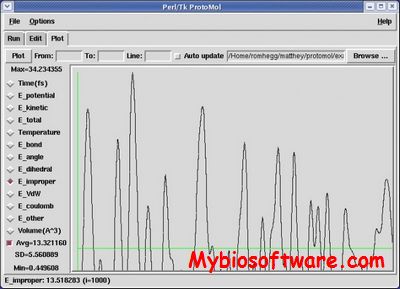MDynaMix 5.2.8
:: DESCRIPTION
MDynaMix is a general purpose molecular dynamics code for simulations of mixtures of either rigid or flexible molecules, interacting by a force field consisting of Lennard-Jones, electrostatic, covalent bonds, angles and torsion angles potentials as well as of some optional terms, in a periodic rectangular, hexagonal or truncated octahedron cell. Rigid bonds are constrained by the SHAKE algorithm. In case of flexible molecular models the double time step algorithm is used. Algorithms for NVE, NVT and NPT statistical ensembles are implemented, as well as Ewald sum for treatment of the electrostatic interactions. Treatment of quantum correction to the atomic motion can be done within the Path Integral Molecular Dynamics approach. Possibility for free energy computations by the expanded ensemble method is included.
::DEVELOPER
:: SCREENSHOTS
N/A
:: REQUIREMENTS
- Linux
:: DOWNLOAD
:: MORE INFORMATION
Citation
A.P.Lyubartsev, A.Laaksonen,
MDynaMix – A scalable portable parallel MD simulation package for arbitrary molecular mixtures”
Computer Physics Communications, 128, 565-589 (2000).

